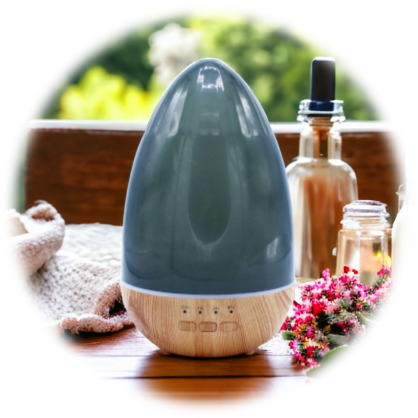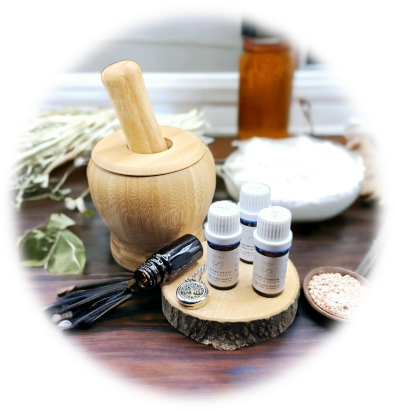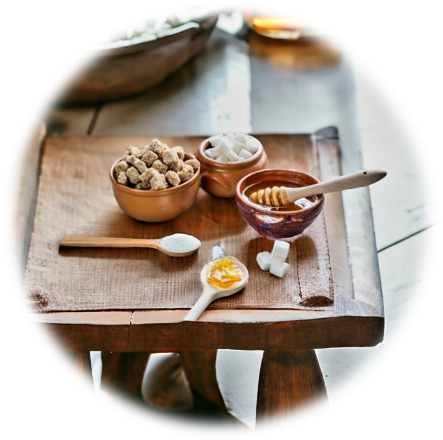"Plants have always served humans. They fed him, sheltered him and cared for him. The medicinal virtues of plants come from the wisdom of the earth combined with that of the Universe." Dr Malte HOZZEL
"L'Aromatherapy was created in 1928 by a French pharmacist, René-Maurice GATTEFOSSE, who specified that essential oils from plants are extremely concentrated substances which contain very numerous broad-spectrum molecules which aim to relieve pathologies, improve the health and well-being of the person. Aromatherapy therefore acts on the physical, psychological and emotional levels..
Therefore, the route of administration of an essential oil is different depending on the desired goal.
In this article, we will discuss the main ways of use (for precautions for use, we invite the reader to also consult the item on this site: lateliermarcati.com celles-ci sont largement explicitées pour une information complémentaire).
1. Respiratory route (air):
- Dry inhalation: This involves breathing deeply the essential oil using a pocket inhaler either directly from the bottle or by placing 2 or 3 drops on a tissue.

- Water inhalation (wet): It consists of pouring a few drops of essential oils into a bowl of simmering water while isolating yourself under a sheet in order to breathe the aromatic vapors. This mode of use is quite optimal for decongesting the respiratory tract (sinuses, bronchi, lungs)
- Diffusion by nebulization: It is carried out using an electrical cold air device. Essential oils are concentrated into fine particles that disperse in the air. Useful for eliminating pathogenic germs, promoting breathing, neutralizing bad odors, etc...
- Ultrasonic diffusion: This diffusion is carried out using an electrical device which contains a tank which is filled with water and essential oils are added. This will diffuse a mist containing aromatic molecules through water vapor in a homogeneous and gentler manner. This process serves to purify the ambient air, helps to humidify the room but also to provide an olfactory atmosphere.

2. 2. Cutaneous route (topical): The cutaneous route is the best route (the royal route) to use essential oils in particular thanks to the principle of electivity, the skin filters the absorption of essential oils according to the needs of the body.

Be careful, not all essential oils can be used pure because some are dermocaustic. They will then be diluted in a vegetable oil (sweet almond, jojoba, rosehip, calendula, olive, etc.) before application.
On the other hand, it is possible to apply some pure ones depending on the problem and the surface to be treated: burn, pimples, sting, etc...
It is wise to always seek advice and do a skin test before using an essential oil to ensure good tolerance (reaction, allergy, sensitivity).
Other essential oils are photosensitizing, that is to say, they should not be applied before exposure to the sun to avoid permanent coloring of the skin or even a burn.
In summary, the cutaneous route therefore consists of benefiting from the benefits of essential oils by being in direct contact with the skin. Several uses are therefore possible: bathing, friction, massage,...
The objective is well-being and health: to relax, to refresh oneself, to relax, to promote sleep, to clear the respiratory tract, to promote drainage, to relieve aches, to relieve pain,...
* Essential oils are not water soluble, so they do not mix in water. Thus, in a bath, it is imperative to use a dispersant such as bath salt, bath gel, vegetable oil, milk, etc. for example.
* The arch of the foot remains the ideal preferred route for using essential oils.
3. Oral route: This method of administration may be possible, however, if other methods of use (cutaneous) provide the same result, the oral route will not be used. Indeed, essential oils are concentrates that must be used with caution..

Orally, it can be used sublingually (under the tongue) or perlingually (on the tongue) or by swallowing with honey, a piece of sugar, in a vegetable oil, a neutral tablet, in capsules, etc...
* It is essential to seek advice from health professionals and even aromatherapy professionals before ingesting an essential oil!
* Essential oils are certainly magical but must be used with caution, not all essential oils can be used diffused (for example: Peppermint), or pure directly on the skin (for example: Ceylon Cinnamon) or in ingestion (for example: Black Spruce).
* To treat an oral problem, it is possible to use essential oil as a gargle (mouthwash)
Bibliography:
A.GEA. (2022), "Physiology and essential oils, How do essential oils act on the different systems of the body?", Ed. Dunod
M. FAUCON (2019), "Treatise on scientific and medical aromatherapy - essential oils", Ed Sang de la Terre
* The information written in this article by Atelier MARCATI comes from references in the literature. They are transmitted and shared for indicative and informative purposes. They therefore do not claim to replace medical advice, a diagnosis or any treatment.




The different methods of administration of essential oils